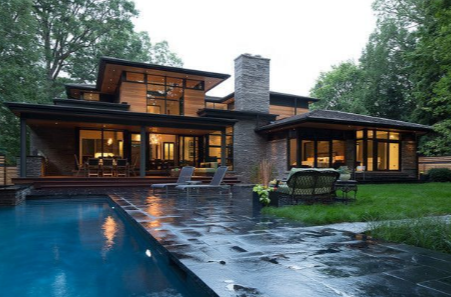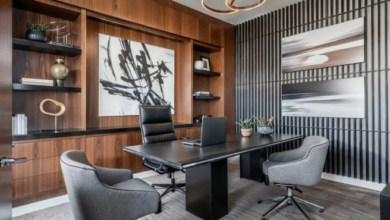Designing a Home That Reflects Comfort and Functionality

A home should be more than a place to live. It should reflect the rhythm of the people inside it. Creating comfort and functionality requires intention, balance, and awareness of how you use each space daily. Whether you are living in a city apartment or a suburban home, the foundation of sound design lies in knowing what makes life flow smoothly.
Decorating with purpose transforms a space from something ordinary into something that feels lived-in and personal. The smallest touches, soft lighting, natural textures, or a clean layout make a significant difference. The goal is not perfection but harmony, where beauty meets practicality.
The Connection Between Home Design and Well-Being
Our surroundings influence how we feel and behave. Studies show that cluttered environments can increase stress and reduce productivity, while clean and organized spaces encourage calm and focus. The energy of a home affects everything from mood to motivation.
Color plays a vital role in setting the tone. Warm hues like beige or soft terracotta create coziness, while cool tones such as pale blue promote relaxation. Lighting also impacts well-being. Natural light energizes, while softer evening lighting supports rest.
Adding personal elements such as photographs, art, or houseplants builds emotional comfort. A thoughtfully designed space supports mental health and daily function.
Functional Design for Everyday Life
Design is not just about visual appeal; it is about practicality. Each room serves a purpose, and its design should make that purpose easier to fulfill. Kitchens benefit from clear surfaces and easy access to tools. Living rooms need versatile furniture that supports both relaxation and gathering.
Functional spaces work best when form follows need. Parents often look for ways to create areas where children can play safely without sacrificing style. Remote workers might prioritize ergonomic furniture and natural light. Retirees may focus on accessibility and simplicity.
A well-designed home adapts to life’s different stages. Flexibility keeps it useful over time, ensuring the space grows along with the family who lives in it.
Keeping Spaces Organized and Efficient
Organization is one of the most effective ways to elevate comfort and design. An organized home feels larger, cleaner, and more welcoming. Regularly reassessing what stays and what goes prevents clutter from building up.
To maintain order, it helps to assign each item a specific place. This reduces visual noise and keeps surfaces clear. Small containers, drawer dividers, and labeled bins simplify the process.
Here are some methods to make organization part of your routine:
- Declutter regularly: Set aside short weekly sessions to sort items you no longer need.
- Use vertical storage: Shelves and wall hooks keep the floor clear and maximize small spaces.
- Plan by function: Store items near where they are used, such as cleaning supplies near bathrooms or linens close to bedrooms.
When the home feels uncluttered, daily tasks become smoother. You spend less time searching for things and more time enjoying your surroundings.
Maximizing Space Through Smart Storage Solutions
Urban living often means limited square footage. Even in larger homes, belongings accumulate over time. Finding innovative ways to store items helps maintain a balance between comfort and utility.
Multi-purpose furniture, like ottomans with compartments or beds with drawers, creates discreet storage. Entryways benefit from benches with shoe racks, while kitchens become more functional with hanging organizers and pull-out shelves.
For items that are not used frequently but hold value, external storage can be a practical solution. Many homeowners rely on local storage units to keep seasonal decorations, family keepsakes, and sports equipment safe without overcrowding their homes. For example, families often turn to self-storage options when they need additional space for long-term or transitional use. This method keeps the home feeling light and open while maintaining access to essential belongings when needed.
Practical storage solutions are about reducing stress and maximizing clarity. A tidy home promotes relaxation and supports the feeling of control that many homeowners seek.
Designing Around Natural Light
Natural light enhances mood and transforms interiors. Spaces that capture sunlight feel more open and welcoming. When designing a home, it helps to consider how light moves throughout the day.
South-facing windows bring in warmth, ideal for living areas and kitchens. East-facing windows fill mornings with brightness, perfect for breakfast spaces or offices. To make the most of natural light, choose sheer curtains or blinds that diffuse rather than block it.
Mirrors can also amplify brightness by reflecting sunlight into darker corners. They add visual depth while keeping rooms feeling airy. Choosing lighter wall colors and minimalist furniture keeps the effect consistent throughout the space.
Light is not only visual; it affects energy and emotion. A well-lit room feels active and alive, encouraging positivity throughout the home.
The Beauty of Layered Textures
Texture is what makes a home feel complete. Combining materials like wood, linen, glass, and stone adds warmth and depth to interiors. Layering textures creates visual interest while keeping the atmosphere inviting.
Natural materials tend to make rooms feel grounded. Woven baskets, cotton throws, and clay planters contribute to a sense of comfort. Contrasting smooth and rough surfaces, like pairing a soft rug with a rustic wooden table, adds dimension.
These small design choices reflect personality. A home that feels tactile invites people to relax and engage with their environment, creating a space that feels lived in rather than staged.
Balancing Technology and Home Life
Technology is part of modern living, but balance keeps it from overwhelming the home. Smart devices can enhance comfort and security when used thoughtfully. Automated lighting, thermostats, and cleaning systems save time and energy, allowing homeowners to focus on family and relaxation.
Creating “tech zones” helps maintain order. Designate charging areas for devices, and keep screens away from dining or sleeping spaces. This maintains a healthy separation between digital and personal time.
A tech-enhanced home should feel intuitive, not intrusive. When used with purpose, innovation supports convenience without diminishing warmth or style.
Building a Family-Friendly Home Environment
For families, home design needs to accommodate movement, creativity, and safety. Open layouts encourage togetherness, while designated quiet corners offer space for focus or rest.
Durable materials are worth the investment when children are part of the household. Washable fabrics, non-slip rugs, and rounded furniture edges help reduce accidents and stress.
Parents can also involve children in organizing their spaces. Giving kids ownership over their rooms fosters independence and teaches responsibility. Simple systems, such as labeled bins or color-coded drawers, make cleanup easier and more enjoyable.
Family-friendly homes are not about perfection. They are about creating a space that nurtures connection, laughter, and learning through daily life.
Outdoor Living as an Extension of the Home
Outdoor spaces deserve as much attention as interiors. Patios, balconies, and gardens can serve as gathering places for family and friends. Adding comfortable seating, plants, and ambient lighting turns any outdoor area into a retreat.
Container gardening is a flexible way to bring greenery to small spaces. Herbs, succulents, and seasonal flowers add life and fragrance to patios or window sills.
Outdoor design enhances both aesthetics and lifestyle. Spending time outside improves mood and encourages relaxation. When well-designed, outdoor areas blur the line between home and nature, making every season more enjoyable.
Sustainability in Home Design
Sustainable design is gaining importance among homeowners who want to minimize waste and protect natural resources. Choosing eco-friendly materials, reducing energy use, and repurposing existing items are small steps that create a lasting impact.
Energy-efficient appliances and LED lighting lower utility costs while benefiting the environment. Reclaimed wood and recycled materials offer character while promoting sustainability. Even simple habits, like line drying clothes or reducing single-use plastics, make a difference.
Sustainability also encourages creativity. Upcycling old furniture or using secondhand décor adds personality and reduces consumption. A mindful approach to decorating benefits both the planet and the home.
Creating a Calm and Restful Bedroom
The bedroom is a sanctuary where design directly influences rest. Minimal décor, soft lighting, and breathable fabrics create the right conditions for relaxation.
Neutral color palettes promote calmness, while layered bedding and cozy throws add warmth. Clutter-free surfaces support mental clarity, allowing for restful sleep.
Personal touches, such as artwork or a small reading nook, make the room feel inviting. The goal is to design a space that encourages rejuvenation, preparing you to face each day refreshed.
The Emotional Value of Home
More than a physical structure, a home holds memories, milestones, and the essence of family life. Its design should reflect that emotional depth. Spaces that support comfort, creativity, and connection nurture the well-being of everyone inside.
Even minor improvements, such as a new shelf, fresh paint, or a reorganized space, can shift the energy of an entire home. Over time, these adjustments accumulate into a lifestyle of ease and harmony.
Home design is not a one-time project but a continuous process of growth. As lives change, homes evolve too. A well-designed home adapts gracefully, constantly reflecting the people who make it their own.




